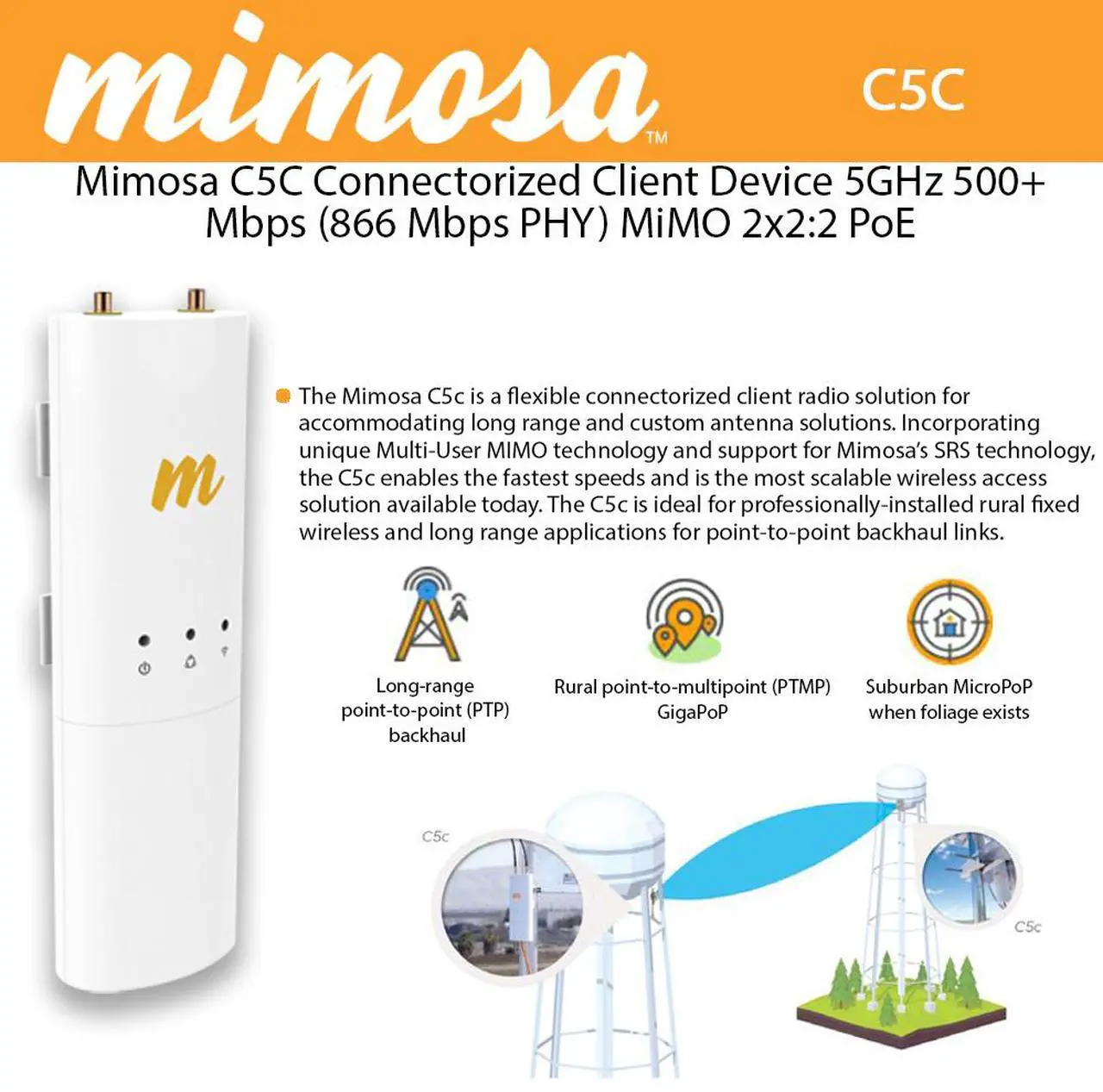C5C-MIMOSA-NETWORKS - Modular radio up to 500 Mbps of 4.9 - 6.4 GHz, IP55, 2x 2: 2 MIMO, Mimosa Cloud Monitoring and Management, Auto-optimization The Mimosa C5c radio has been specially designed to make long-distance ( PTP) backhaul links or be used as a Client in Point-to- Multipoint ( PTMP) links with an A5c. More economical and faster-connectorized backhaul for long-distance links in the free and licensed band Main characteristics of the C5c.
• Operation mode: PTP Backhaul between C5c with C5c or PTMP client mode of an A5c or A514.
• MIMO and Modulation: 2x 2: 2 MIMO OFDM up to 256 QAM.
• Maximum transmission power: 27 d Bm. • Bandwidth management in DL /
UL: 50/50, 75/25, 25/75% and automatic due to traffic sense demand.
• Maximum performance: up to 500 Mbps of aggregate speed in DL / UL.
• For outdoors: IP55.
• Temperature range: -40 to 55 ° C (-40 to 131 ° F).
• Maximum power consumption: 12.9 W ideal for solar systems.
• Power supply: 24 - 56 Vdc, via POE-48 V passive Po E injector (included).
• Network interface: Gigabit Ethernet.
• Security: WPA2 + Mimosa 802.1 x.
• Frequency: PTP 4.9 - 6.4 GHz and PTMP 4.9 - 6.2 GHz.
• Connectors: 2 x SMA Reverse Female for external antenna (not included). ( Estimated distance from 0 to 100 km in PTP and 0 to 15 km in PTMP depends on the conditions of each site such as spectrum availability, noise levels, full line of sight and bandwidth sought) APPLICATIONS Long-range point-to-point ( PTP) backhaul Rural point-to-multipoint ( PTMP) Giga Po P Suburban Micro Po P when foliage exists ADD SUBSCRIBERS WITH EASE Auto- Provisioning together with the Mimosa Install App, now dramatically reduces subscriber installation time, automates device provisioning and allows seamless device integration into an ISP network. SPECTRUM REUSE SYNCHRONIZATION ( SRS) CLIENT In SRS mode, all uplink and downlink transmissions are scheduled by the Access Point ( A5/ A5c), which greatly improves medium access protocol ( MAC) efficiency, allows interference coordination, and reduces jitter. In contrast, in Wi Fi- Interop mode, clients need to contend with each other to access the channel, which leads to reduced MAC efficiency, higher interference levels, and higher jitter.

